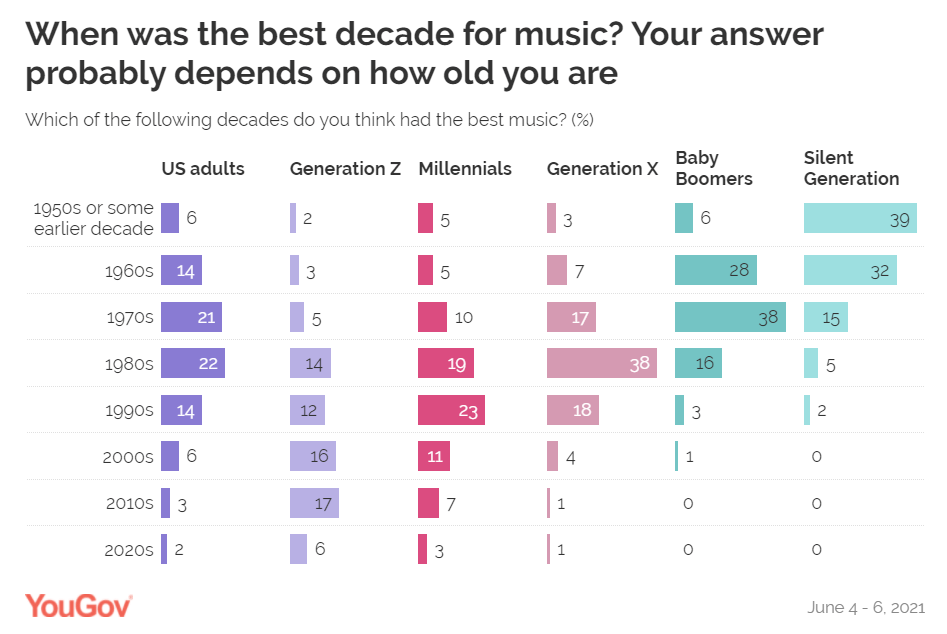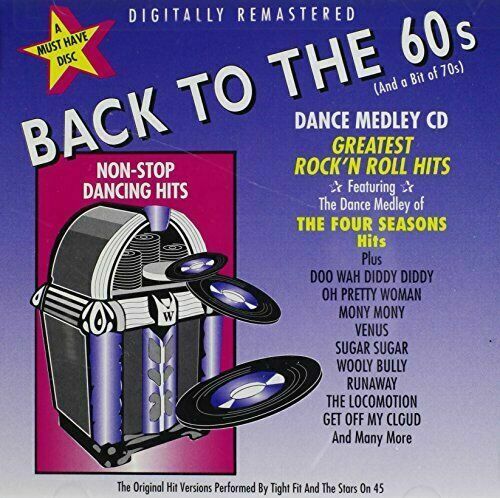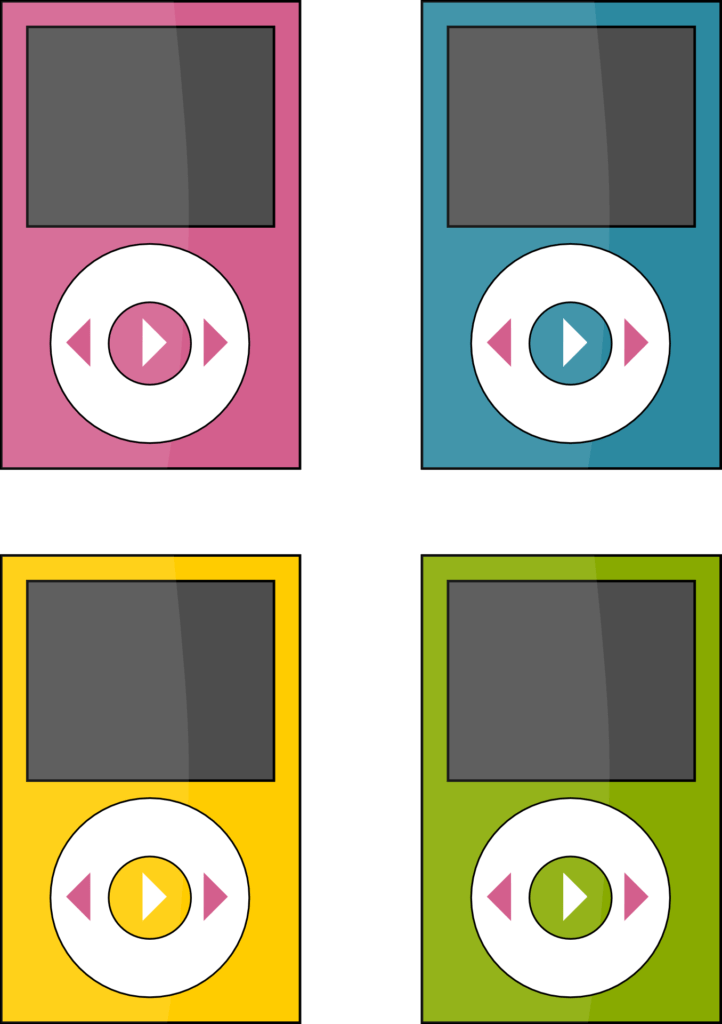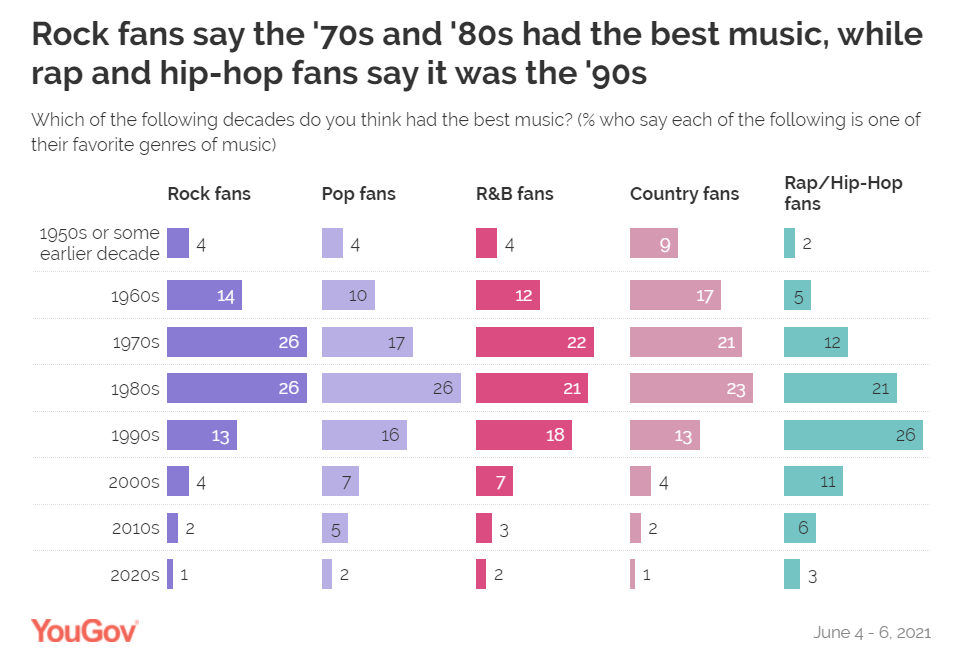 Research budgets are at a premium in radio this year, thanks in no small part to the ravages of the pandemic. After a cataclysmic year like the one we’ve just experienced, this is the opportune time to take the audience’s temperature – so to speak – to learn about how they’ve come through 2020, as well as the impact of a year when habits and routines were severely disrupted.
Research budgets are at a premium in radio this year, thanks in no small part to the ravages of the pandemic. After a cataclysmic year like the one we’ve just experienced, this is the opportune time to take the audience’s temperature – so to speak – to learn about how they’ve come through 2020, as well as the impact of a year when habits and routines were severely disrupted.
But if there’s no cash on hand or a music test or perceptual study in the planning stages, I may have the next best thing for you. Aside from some of the essentially free research out there – our Techsurveys, Edison’s Infinite Dial studies, and Nielsen’s general trends and overviews, new research from YouGov may be just what you’re looking for – especially if you’re in need of some accurate insights about changing musical tastes.
They’ve just wrapped up an extensive study of Americans that ranges from the Silent Generation (seniors born between 1928-1945) to Gen Z (born in 2000 or later).
The study is focused on music tastes, specifically the decade of music people prefer most. It’s a big sample – north of 17,500 respondents – and it’s fresh. The field work took place earlier this month.
Musical decades are a frequent topic in virtually every conversation I have with clients. And they’re also the subject of much debate. Your favorite 10-year period of music says a lot about you and your tastes.
Some contend the music you grew up with is essentially your playlist for life. Others believe that music tastes, especially in recent years, have been warped by media, technology, and other variables, making it highly possible you have a preference for music that came out years before you were born.
Now, thanks to YouGov America, the answers are taking shape. Data journalist Jamie Ballard published the piece last week: “Americans say the 1970s and 1980s were the best music decades.” And while her headline speaks volumes about where mass appeal tastes are centered, the devil – as always – is in the details. In this case, the data.
Here’s the study’s key chart – a cornucopia of research findings that should settle many old arguments about music tastes, while igniting several new ones:

As the headline suggests, your age – more specifically, when you were born and your formative musical years – dictates your go-to decade. But only up to a point. It holds for older generations, but not so much for their younger kids and grandkids.
Predictably, members of the Silent Generation heavily favor oldies from the ’50s, Boomers rally around the ’70s (the Classic Rock years), while Gen Xers have a definite lean toward the ’80s (those MTV-era hits). Chronologically, this fits Ballard’s premise.
 And there’s strong generational agreement about their decades of preference. Close to 40% of each generation gravitate to their favorite 10-year musical period. That’s a big part of the reason music radio formats work so well and are dependable. Music tastes tend to be demographically predictable, falling into those neat generational columns.
And there’s strong generational agreement about their decades of preference. Close to 40% of each generation gravitate to their favorite 10-year musical period. That’s a big part of the reason music radio formats work so well and are dependable. Music tastes tend to be demographically predictable, falling into those neat generational columns.
But it’s the Millennials where it all breaks down. While the 1990s are their preferred decade, there’s much less consensus for music that ranged from Grunge to Alanis Morissette to Limp Bizkit to Hip-Hop. In fact, less than one in four express love for the ’90s, followed by the ’80s (19%), and then the ’00s (only 11%).
Passion and a decade focus all but deteriorate for Gen Zs. Not surprisingly, their favorite decade is music from the 2010s – their version of “currents” -– but only with 17%. Nearly as many of these teens opt for the ’80s and ’90s as they do the music of today.
Most of you reading this are not in your teens. But if you think back to those special years, they were a time of music discovery and unabashed passion. Chances are, you were tuned into music of your day, buying it on whatever format was popular, as well as attending concerts.
passion. Chances are, you were tuned into music of your day, buying it on whatever format was popular, as well as attending concerts.
But that love affair with “the music you grew up with” when you were an impressionable teenager is a non-starter for both Gens Y and Z. It doesn’t mean today’s kids don’t enjoy new music because many do. But the chart explains why we see teens wearing AC/DC shirts. Or all those twentysomethings who show up at Elton John concerts. Or the droves of kids watching Bohemian Rhapsody again and again.
Why is this happening and why do the two younger generations show a much different pattern than their elders?
Many believe that today’s music pales in comparison to the greatest hits of the ’70s, ’80s, and ’90s. Jamie Ballard even quotes the prophetic words of Bob Seger in the lead paragraph of her story:
“Today’s music ain’t got the same soul – I like that old time rock n’ roll.”
I’m not buying it.
For the second half of the last century, it made sense that large coalitions of fans formed around an artist or even a genre of music. That’s because everyone was listening to the same music on the same source at the same time:
Radio
 In the 2000s, that began to change, starting with the iPod explosion. MP3 players had been around before Steve Jobs created an entirely new market for aggregating, selling, organizing, and playing music. The Apple iPod became a “must have” device, and it spawned a new way to listen to music – from lots of different genres.
In the 2000s, that began to change, starting with the iPod explosion. MP3 players had been around before Steve Jobs created an entirely new market for aggregating, selling, organizing, and playing music. The Apple iPod became a “must have” device, and it spawned a new way to listen to music – from lots of different genres.
Then came streaming services, notably Pandora and then Spotify. Technology changed the ways in which consumers were being exposed to new music. And while broadcast radio is still a dominant source for music, myriad other outlets have splintered a once monolithic market. YouTube, TikTok, video games, and of course, streaming platforms have all changed the way music is exposed. Today’s kids still love music, but they’re all listening to a different mix.
The fact that just as many Gen Zs prefer music from the ’60s, ’70s, and ’80s, than newer releases that are 2010 and later says it all. As a child of the ’60s myself, I cannot imagine taking a survey in 1968, and selecting the 1940s or even the 1950s as my favorite decade.
But that’s where we are today.
It gets even more eye-opening when you look at YouGov’s data by format or genre:

For Rock fans (and there is no delineation for Classic or Mainstream Rock), it’s all about the ’70s and ’80s. Interestingly, the ’60s edge out the ’90s.
Those who identify as Pop partisans (another vague descriptor) present a true radio programming conundrum. Only 7% opt for music from the 2010s and later. Their favorite decades are the ’70s, ‘800s, and ’90s.
Country fans present a true puzzle. And I would recommend not showing this chart at the next CRS get-together. For a format that leans heavily on newer music, only one in five Country P1s opt for songs from 2000 and newer. Meantime, it’s the ’90s and then the ’80s where you see strong agreement.
And for Rap/Hip-Hop, the YouGov number indicate those “throwback” radio stations are onto something. A solid plurality point to the ’90s as the epicenter of their musical tastes.
 I realize many radio programming mavens will scoff at this data, saying the ratings, their music research, and their perceptual studies reveal very different results. I would counter that with the fact that when radio broadcasters consider those under 25 and those over 54 as non-targets, the industry is missing not only a large segment of the audience, but billions of dollars of spending power as well.
I realize many radio programming mavens will scoff at this data, saying the ratings, their music research, and their perceptual studies reveal very different results. I would counter that with the fact that when radio broadcasters consider those under 25 and those over 54 as non-targets, the industry is missing not only a large segment of the audience, but billions of dollars of spending power as well.
To walk away from Gen Z, the Silent Generation, and the bulk of Baby Boomers raises all sorts of questions about the state of the business. YouGov counted all those people
So which is it? Is the music you were exposed to when you were 12 or 13 years-old the songs and artists you’ll still love when you become a senior citizen? Or has today’s technology warped the ways in which teens are exposed to new music, thus ending the traditional generational appeal patterns?
My experience with Classic Rock and music research suggests that both theories may be true – at the same time. Among Silents, Boomers, and Xers, it is about the songs (and albums) that echoed through their high school gyms and dorm rooms that became permanent parts of their musical DNA.
But for Millennials, Zs, and the generations to come, all generational music bets are off. Pop culture, videos, movies, social media, and games have become powerful music exposers. And it’s not just new releases or up-and-coming artists.
How else do you explain that phenomenon last summer when Fleetwood Mac’s “Dreams” started charting again after its release four decades ago because it was the soundtrack in that TikTok video that went super-viral?
@420doggface208
People started drinking Ocean Spray Cranberry Juice again, too. And they didn’t run a single ad on the radio.
Radio programmers will have to work harder (sad, but true) to keep up with the changes wrought by digital media and non-linear exposure to music.
Who will be the first station to “add” Pet Shop Boys’ “Opportunities,” a song that’s 35 years-old? You might want to test it.
https://www.youtube.com/watch?v=BbQBBWGGX9Y
- “Honey, would you please talk to Alexa?” - March 28, 2025
- On The Radio, It’s Always 5 O’Clock Somewhere - March 27, 2025
- Radio: Still King Of The Car? - March 26, 2025




Really great work and insight, even revealing. Anyone creating, exposing, distributing, delivering, making a living from musical content should take a serious look.
Is is eye-opening data, Billy. Many thanks.
Outstanding! Thank you, Fred!
Highway to Hell, or Wap?
The choice is obvious…among pretty much anyone!
I love this data, thanks Fred!
Thanks for reading it, JC.
Yep.
I’ve been thinking this for quite a while. I have fans of my classic hits station ranging from 21 to 65 (and up). While the my fellow Gen Xers love their 80s, so does my son (who’s 24) and many of his friends.
It’s much easier to find those songs from the past — and they’re much more exposed to them than they were when I was in my teens and 20s. What’s good (and that’s subjective, I know) has more potential to hang around now.
I also thought about testing “Opportunities” when I saw that ad, too. We’ll see how it goes.
Let me know how it tests. FWIW it’s officially stuck in my head.
Matches my experiences with The Eighties Channel. Decent Boomer numbers but the core is Gen X and Gen Y. Thanks for posting those results, Fred!
Thank you, KM, for reading & commenting.
I think some of the popularity of the classic rock could be due to the use in games. As it comes off of royalty or the artist sells their library it gets used in ways on games and on platforms that influence a different generation.
No doubt about that – I remember “Guitar Hero’s” influence in that context, exposing millions of kids to Classic Rock. Thanks for pitching in.
Great stuff, Fred! It’s interesting how the tides have now shifted. I would like to note however, that my three Millenial sons all grew up in the 90s listening to (and loving) my Classic Rock from the 60s & 70s. I think we as parents were a lot more generous exposing our music onto our kids than in previous generations.
Generous or relentless? 🙂 I remember driving my son nuts. Every time he’d play something or someone new, I was the first to remind him how much it sounded like the Kinks, the Who, or the Doors. It drove him nuts, but he ended up becoming a pretty loyal fan of Classic Rock. Thanks for the comment.
Traditionally, fans first gravitate to artists their own age. By the time they are in their late ’20s they have their “stars” and are hesitant to waste time on newer artists. Prior to the ’80s, an artist’s career began in local small venues. By the ’80s, a tiny number of large corporations were running the record stores and venues. Indi labels were consolidating, and the “suits” began running everything. To me, this resulted in homogenized background muzak that no longer developed engaged fans. New title record sales actually reflected this in the ’90s. CD catalog sales made up for it before Napster wiped those sales out. Napster got the blame but there was a great big problem prior to the rise of Napster. I’ve been waving my arms and screaming about this for over 20 years.
Bob, death by a thousand cuts, and you raise a number of them here. Looking back, I think the death of the album also conspired to devalue an artist’s brand. Hard to believe people would stand in line to buy the new album from Bowie, Queen, or the Eagles. Thanks for engaging on this.
I’ve been saying this for years. Millennials were the Napster generation where EVERYTHING was available at our fingertips and this data suggests streaming has only strengthened the ability for Gen Z to find old music. Millennials and Gen Z also grew up with Classic Rock and Classic Hits always existing (my favorite station growing up was Classic Rock WZLX in Boston).
The old ways of guiding kids and young adults to new music are gone in the on demand world. They can pick whatever they like listening to. The next big question is who finds the best way to curate content in the streaming world, which Spotify, Apple, et al haven’t seemed to figure out yet.
Good analysis, Fred, but I challenge the arbitrary selection of numerical decades as the starting point. That is, I think musical decades over the past half century, insofar as they embody particular prevalent styles, began mostly on the fives: 1945-55, 1955-65, 1965-75 and so on. These brackets encompass coherent, discrete bodies of music, blending into one another, at least to my ears. This would be a more useful analysis, I think.
As for picking one “decade” and sticking with it as a strong preference, this might suffice for listeners who aren’t that deeply committed to the art form–they just want the hits, and maybe that’s where the money is in commercial radio. But genuine musicophiles, I think, keep their minds open to new styles and to new evolutions of existing styles. For example, I cherish the 1965-75 decade, but I also love reggae, dub, world music, and Indian classical. Not to sample lots of genres is to starve at a banquet.
John, you point out an age-old problem – and you make a good point. It’s easy to talk decades – it’s another thing to make sense of music categories with those clean 10-year breaks. Most stations use decades for categories, although in Classic Rock, the early 70s, late 70s, and early 80s, often merit their own designation. It’s very much at the discretion of programmers, most of whom have their own systems. Thanks for chiming in on this one.
Fred…Pat O’Day (the late great) had a format he syndicated called Mega. It featured a big playlist of hits from country, top 40 and AC from three decades. Nice idea…but it sounded like a train wreck (IMHO). Really interesting data….so do you see a return to a radio format that plays a little of everything for everyone? Or broader playlists? What’s the impact of this data on radio today in-your-opinion?
Jackson, I don’t want to portray myself as being expert on Country, Variety Hits, etc. The data the blog post highlighted is merely preferences – that doesn’t mean it goes together. I mind like steak and sushi, but eating it together as a meal just doesn’t feel right.
All that said, I’m hearing from Country programmers who are telling me the data looks weird because most fans like the new stuff, and only say they like the 80s and 90s. But in Country (like most radio formats) won’t talk to anyone 55 and older. I suspect a lot of the appeal for older decades is driven by “mature’ fans.
Thanks for the comment.
I can’t believe I found this article so late. This goes hand in hand with a talk I had with another programmer at work the other day. It IS the I-Pod that changed everything, I completely agree. I feel that instead of sounding like the popular music being released, and the recurrents and gold happened to your format at that time, Now radio has the chance to choose the songs that sound like them. By that I mean, this: It took me 3 long years to convince my group PD that we needed a hybrid rock format to be able to dominate in my market. So, we CHOSE rock songs that had the sound and texture that we wanted, instead of being a slave to a list (ESPECIALLY a ppm list, I’ll rant about that another day). IT SOUNDS GREAT. While remaining true to the rock format. The reason I’m telling you this story is to say again, we adapt to our world or we die trying to keep it alive in an environment that has changed and can’t support it. Radio has it’s place, adapt or die. This music research shows it. Thanks for another great read!
Texture. There’s a word you don’t often hear. Usually, we talk decades and at best, tempo. Per my comment to Jackson Del Weaver, the missing variable is often “What goes good with what else?” That’s not an especially artful way to put it, but that’s what programmers do.
There are things about the “PPM Way” that diary programmers ought to think about. Playing a 225 song “safe list” is probably not one of them.
Tammie, thanks for reading the blog, and always leaving thoughtful comments.
This is great, thanks Fred! I love what Stranger Things is doing for 80’s music. I wonder if Planck’s Constant is having the same renaissance in quantum mechanics circles.
If Sheldon Cooper has something to say about it, absolutely. Thanks, Laurie!
Fred,
Your blog is a must -read every day. You consistently tap into provocative notions and challenge the status quo. The one thing I find missing in all this data is American culture. Somewhere in between the songs, the artists and our ideas of acceptance vs. ignorance, it exists. For 3 years I have curated, written and hosted a show on non-comm WUMB Boston. It is a time capsule of one year per hour. Over time I have discovered and rediscovered the amazing variety and impact pop music has had, and continues to have. Technology, culture and access have combined to unleash the pure art that floats through the atmosphere. There is no generation/racial/ethnic/class barrier for those with open minds and ears.
You are so right about that Pet Shop Boys song. It makes no difference when that song originally came out, because it has redefined now, now. Both my niece and nephew play lead guitar, and are encyclopedic about music, in part because their mom gave them a steady diet of satellite radio, focusing on great music, not what corporate radio was pushing. They had an excellent foundation before they ever graduated high school. Access to fulfill curiosity is the key. A library is affordable to all -Youtube the great equalizer. Now the decades must compete for passion, it isn’t automatic. My favorite decade is the one I hear right now.
I feel revitalized as a host whose career in corporate radio ground to a halt with consolidation, together with my refusal to relocate. I became a dinosaur. I hear everything on an equal platform today, and love taking apart samples in a Drake song and tracing them back to Gil Scot-Heron, Brook Benton, and Bobby “Blue” Bland. Popular music has gone around the world and come back down countless cultural avenues. My niece is playing Cure riffs, while my nephew is working Howlin’ Wolf on his Telecaster. Both are under 25. Meanwhile I am exposing an audience to Arlene Smith, the girl from the Bronx who came to doo-wop via Carnegie Hall as lead singer of The Chantels in 1958 with the smash “Maybe.” Her story should be told – for anyone who wants to listen. The Bronx also gave us Laura Nyro, Carly Simon, Irene Cara, J-Lo, Mary J. Blige, and Belcalis Marlenis Almánzar, better known as Cardi B. Cran over ice never goes out of style.
Tai, I love this. It speaks to the power of music – more than the medium that delivers it. I couldn’t have articulated this better than you have.
I so appreciate your readership, and more importantly, your considerate responses to my thought-starters.
Rock on, my friend, and congrats on being rejuvenated by what got you going in the first place – the music.